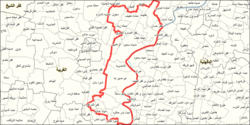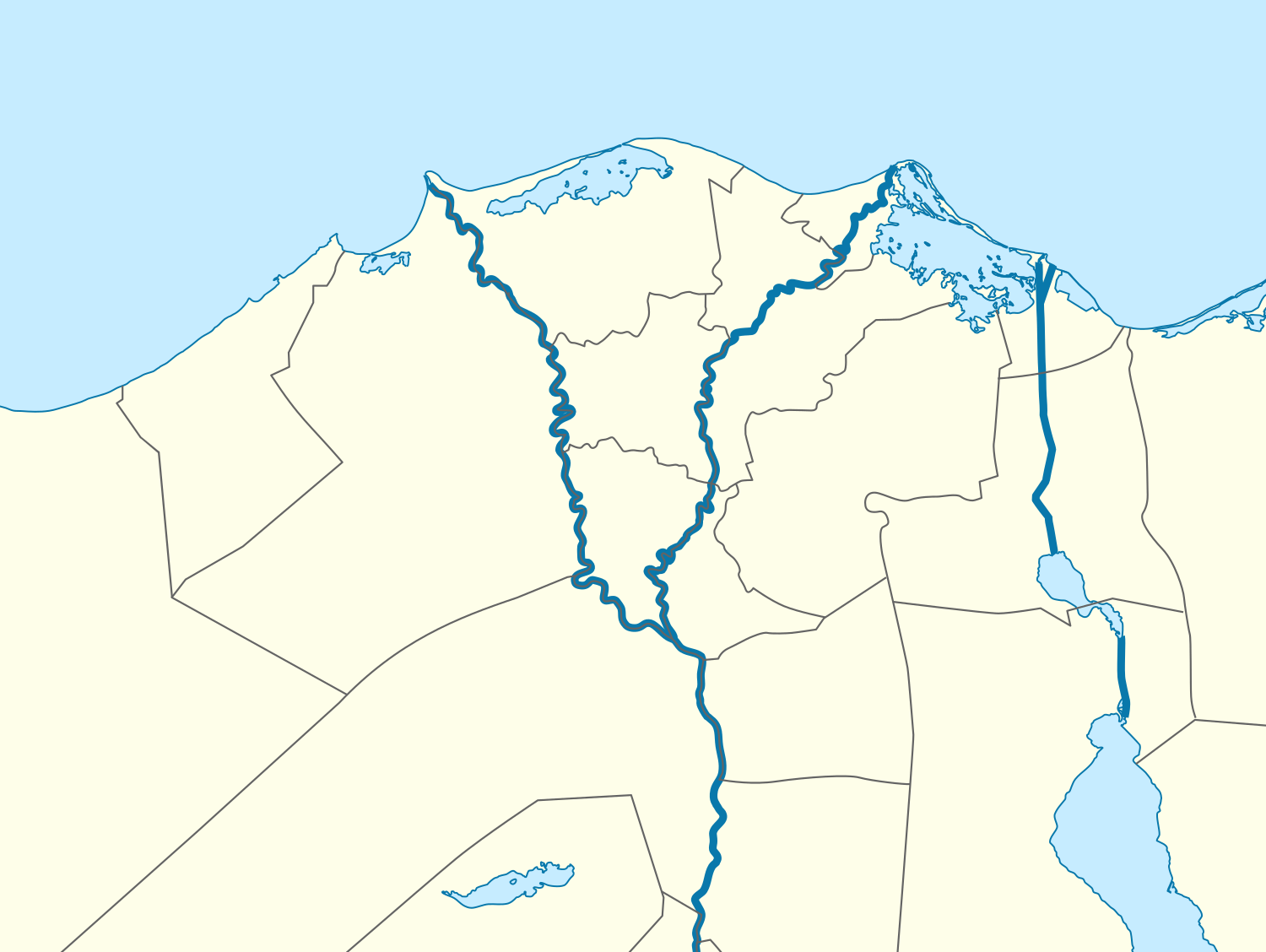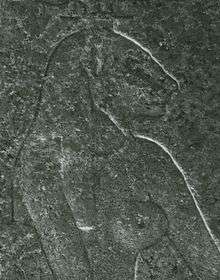Sebennytos
Sebennytos or Sebennytus (Arabic: سمنود, romanized: Samannūd, Coptic: ϫⲉⲙⲛⲟⲩϯ and ϫⲉⲃⲉⲛⲟⲩⲧⲉ[4] also in late Coptic ⲥⲉⲃⲉⲛⲛⲏⲧⲟⲩ and ⲥⲉⲃⲉⲛⲛⲉⲧⲟⲩ[3], Greek: Σεβέννυτος and Σεβέννυς,[5][3] or ἡ Σεβεννυτικὴ πόλις,[6] Egyptian: ṯb-(n)-nṯr), was an ancient city of Lower Egypt, located on the now-silted up Sebennytic branch of the Nile in the Delta. Sebennytos was the capital of Lower Egypt's twelfth nome (the Sebennyte nome). Sebennytos was also the seat of the Thirtieth Dynasty of Egypt (380-343 BCE).[7][8][9][10]
Sebennytos سمنود Samannūd | |
|---|---|
    | |
 Location in Gharbia Governorate | |
 Samannud Location in Egypt  Samannud Samannud (Egypt) | |
| Coordinates: 30°58′00.0″N 31°15′00.0″E | |
| Country | |
| Governorate | Gharbia |
| Area | |
| • Total | 57 sq mi (147 km2) |
| Population (2019 (estimated))[1] | |
| • Total | 410,388 |
| Time zone | UTC+2 (EST) |
| ṯb-nṯr[2][3] in hieroglyphs |
|---|

As of 2019, the population of the markaz of Samannud was estimated to be 410,388, with 83,417 living in urban areas and 326,971 in rural areas.[1]
Name
The name Samannud ultimately derives from the Ancient Egyptian name ṯb-(n)-nṯr, meaning "city of the sacred calf".[11] The name was probably pronounced */ˌcabˈnaːcar/ in Old Egyptian and */ˌcəbˈnuːtə/ or */ˌcəbənˈnuːtə/ in Late Egyptian.[12]
Geography
Sebennytos lies nearly due east of Sais on the 31st parallel north. Nearby during the Thirtieth Dynasty, on the same banks of this branch of the Nile, was Behbeit El Hagar.[13]
Sebennytos was from ancient times a place of some importance, and standing on a peninsula, between a lake (λίμνη Σεβεννυτική, Lake Burullus) and the Nile, was favorably situated for trade and intercourse with Lower Egypt and Memphis. The neglect of the canals, however, and the elevation of the alluvial soil have nearly obliterated its site.[14]
Today, Samannud lies on the Damietta branch of the Nile; south of Samannud, the Damietta branch is identical to the ancient Sebennytic channel. The Sebennytic branch, named after this city, was one of the main branches of the ancient Nile. North of Samannud, it continued north before discharging into the Mediterranean at Lake Burullus.[15] The Sebennytic branch silted up sometime between the 7th and 10th centuries CE and is now well buried, with its course is hard to identify via aerial survey.[16]
History
| Historical population | ||
|---|---|---|
| Year | Pop. | ±% |
| 1996 | 249,672 | — |
| 2006 | 298,166 | +19.4% |
| 2019 | 410,388 | +37.6% |
| Source: Citypopulation.de[1] | ||
Sebennytos is perhaps best known as the hometown of Manetho, a historian and chronicler from the Ptolemaic era, c. 3rd century BC. Sebennytos was also the hometown of Nectanebo II, and he was its last ruler.[17]
A temple dedicated to the local god Anhur, or Anhur-Shu, and his lioness goddess mate Mehit, once existed at this location but is now reduced to ruins. A fragment to where kings would have made offerings to Anhur and his wife, is on display at the Walters Art Museum.[18]
Samannud violently resisted the Muslim conquest of Egypt in 639, and remained rebellious for some time thereafter; the city revolted four times in the first half of the eighth century. Three Coptic Patriarchs came from Samannud: John III, Cosmas II, and John V. The 12th-century Coptic philologist Yuhanna al-Samannudi also came from Samannud, and served as its bishop.[19]
Samannud's bishopric remained active through the late thirteenth century, indicating the presence of a large Christian population at the time.[20]
In 1843, John Gardner Wilkinson described it as a place of some size, with the usual bazaars of the large towns of Egypt, and famous for its pottery, which are sent to Cairo.[21]
The 1885 Census of Egypt recorded Samannud as a city in its own district in Gharbia Governorate; at that time, the population of the city was 11,550 (5,686 men and 5,864 women).[22]
In religious traditions
In a Coptic tradition, Sebennytos is part of the route of the Holy Family during the flight into Egypt narrated in the Gospel of Matthew (2:13–23).[23]
See also
References
- "Samannūd (Markaz, Egypt)". Citypopulation.de. Retrieved 20 June 2020.
- Wallis Budge, E. A. (1920). An Egyptian hieroglyphic dictionary: with an index of English words, king list and geological list with indexes, list of hieroglyphic characters, coptic and semitic alphabets, etc. Vol II. John Murray. p. 1059.
- Gauthier, Henri (1929). Dictionnaire des Noms Géographiques Contenus dans les Textes Hiéroglyphiques Vol .6. p. 74.
- https://st-takla.org/books/pauline-todary/coptic-language/egyptian.html
- Ptolemy iv. 5. § 50, Stephanus of Byzantium
- Strabo xvii. p. 802
- Gray, Leon (2010). The New Cultural Atlas of Egypt. Marshall Cavendish. p. 143. ISBN 9780761478775.
- Peck, Harry Thurston (1898). Harpers Dictionary of Classical Antiquities (1898). Harper and Brothers.
- Smith, William (1858). Dictionary of Greek and Roman Geography. Retrieved 29 March 2020.
- Cooper, William Ricketts (1876). An Archaic Dictionary: Biographical, Historical, and Mythological: From the Egyptian, Assyrian, and Etruscan Monuments and Papyri. S. Bagster and Sons. p. 496.
- Sterling, Gregory E. (1992). Historiography and Self-Definition: Josephos, Luke-Acts, and Apologetic Historiography. Brill. p. 118. ISBN 9004095012. Retrieved 22 June 2020.
- Loprieno, Antonio (1995) Ancient Egyptian: A Linguistic Introduction, Cambridge: Cambridge University Press, ISBN 0-521-44384-9, p. 34
- Wilkinson, John Gardner (2013). Modern Egypt and Thebes. Cambridge University Press. p. 412. ISBN 978-1-108-06509-2.
- Champollion, Jean-François. l'Egypte, vol. ii. p. 191.
- Smith, William (1870). Dictionary of Greek and Roman Biography and Mythology, Volume 2. Little. p. 433. Retrieved 22 June 2020.
- Wilson, Penelope (2019). "Human and Deltaic Environments in Northern Egypt in Late Antiquity". Environment and Society in the Long Late Antiquity. Brill. p. 237. ISBN 9004392084. Retrieved 22 June 2020.
- Bill Manley, The Seventy Great Mysteries of Ancient Egypt" Thames & Hudson Ltd, 2003. p.101
- Watterson, Barbara (2003). Gods of Ancient Egypt. History Press. p. 41. ISBN 978-0-7524-9502-6.
- Sidarus, Adel (2017). "Yuhanna al-Samannudi, the Founder of National Coptic Philology in the Middle Ages". In Gabra, Gawdat; Takla, Hany N. (eds.). Christianity and Monasticism in Northern Egypt: Beni Suef, Giza, Cairo, and the Nile Delta. Oxford University Press. pp. 139–140. ISBN 1617977802. Retrieved 22 June 2020.
- Tsuji, Asuka (2017). "The Veneration of Anba Hadid and the Nile Delta in the Thirteenth Century". In Gabra, Gawdat; Takla, Hany N. (eds.). Christianity and Monasticism in Northern Egypt: Beni Suef, Giza, Cairo, and the Nile Delta. Oxford University Press. p. 190. ISBN 1617977802. Retrieved 24 June 2020.
- Wilkinson, John Gardner (1843). Modern Egypt and Thebes: Being a Description of Egypt, Including the Information Required for Travellers in that Country. John Murray. p. 432.
- Egypt min. of finance, census dept (1885). Recensement général de l'Égypte. p. 288. Retrieved 21 June 2020.
- "The Holy Family at Meniet Samanoud". Tour Egypt. Archived from the original on 12 September 2016. Retrieved 6 November 2016.
| Preceded by Mendes |
Capital of Egypt 380 – 332 BC |
Succeeded by Alexandria |